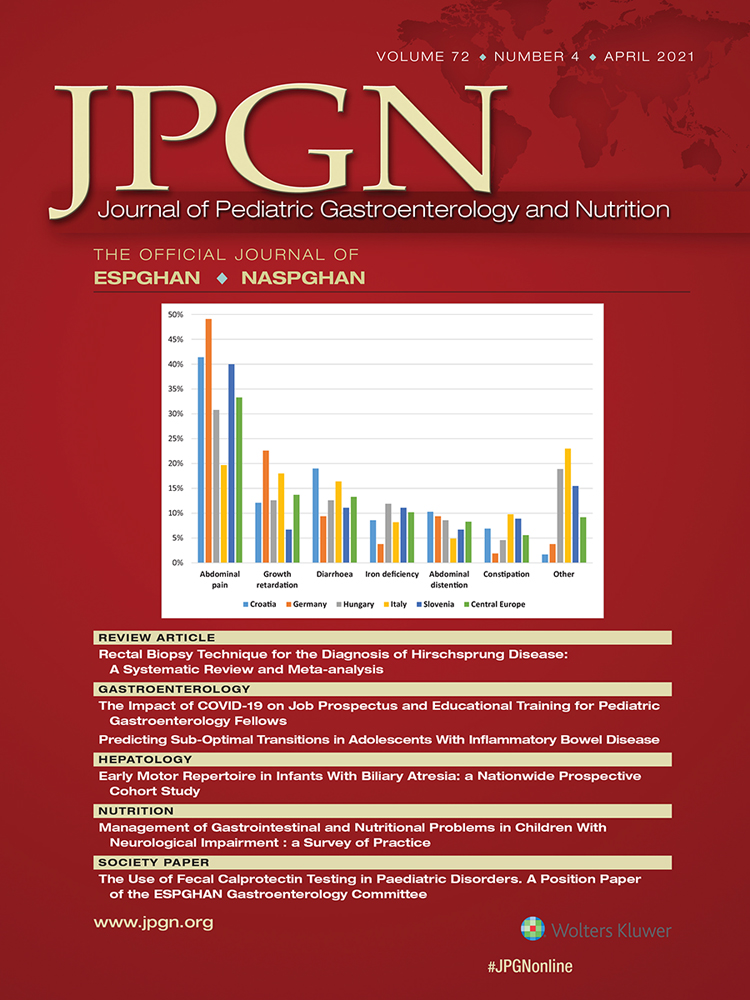Initial Experience With Endoscopic Ultrasound-guided Coil Placement for Pediatric Gastric Variceal Hemostasis
Supplemental digital content is available for this article. Direct URL citations appear in the printed text, and links to the digital files are provided in the HTML text of this article on the journal's Web site (www.jpgn.org).
The authors report no conflicts of interest.
ABSTRACT
Background:
Gastric variceal (GV) bleeding is among the most morbid sequelae of portal hypertension, with mortality ranging from 30% to 50%. Pediatric data focused on endoscopic approaches to management are needed. The present study represents the first pediatric case series of endoscopic ultrasound (EUS)-guided coil placement within feeding vessels as monotherapy for management of GV bleeding.
Methods:
Using our prospectively maintained endoscopy database, we identified patients 18 years and younger who underwent EUS-guided coil placement for management of GV bleeding from 2008 to 2018. Demographics, indication, procedural interventions/findings, and available clinical outcomes data were analyzed.
Results:
Twelve patients (median age 15, range 11–18 years) underwent EUS-guided coil placement for GV bleeding. All had portal hypertension, with EV in 58.3% and prior GV bleeding with attempted endoscopic management in 75%. Coil placement was accomplished using a linear echoendoscope and a 19-gauge needle. A mean of 2.75 (± 0.43) coils were placed in each patient (4, 6, 8, and 10 mm Nester Embolization Coils, Cook Medical, Bloomington, Indiana, USA). Immediate hemostasis was achieved in all patients, and 25% of patients developed recurrent gastric varices at a median of 5.5 months following the initial EUS-guided coil placement (range 4–6 months) over the median 12 month follow-up period.
Conclusions:
The present study establishes the feasibility and efficacy of EUS-guided coil placement as monotherapy for GV bleeding in children and adolescents. The technique was technically successful, with primary hemostasis achieved in all patients. EUS-guided embolization with coils may represent an alternative to current approaches for management of highly morbid GV bleeding.




